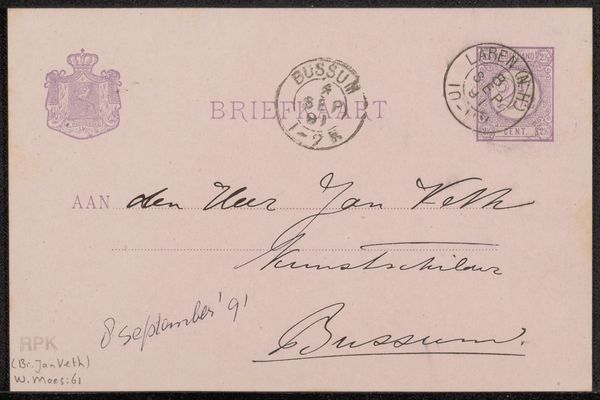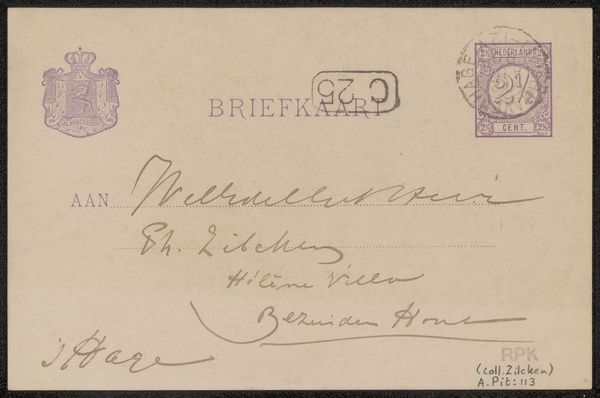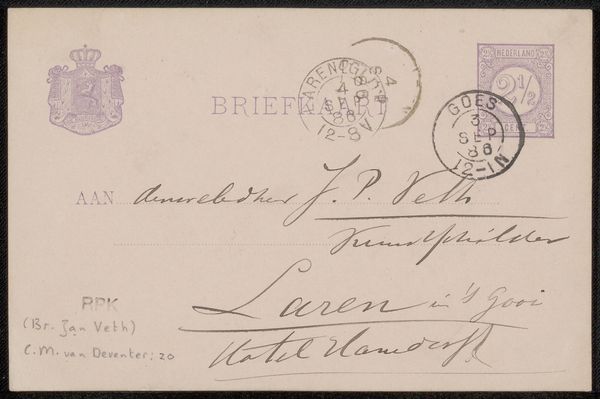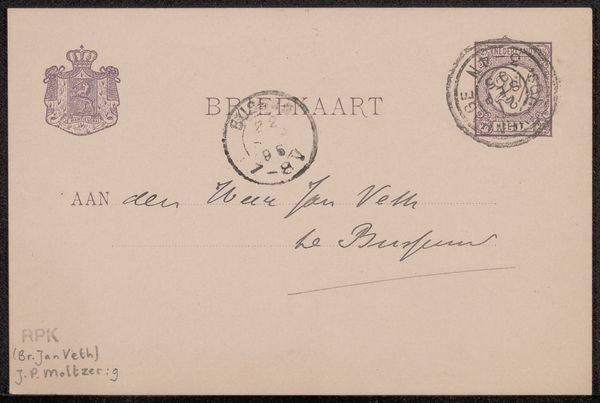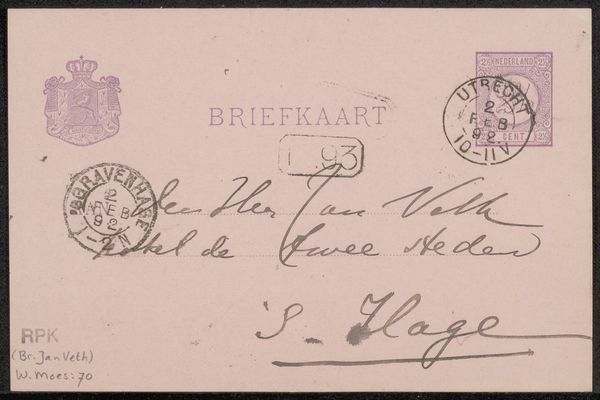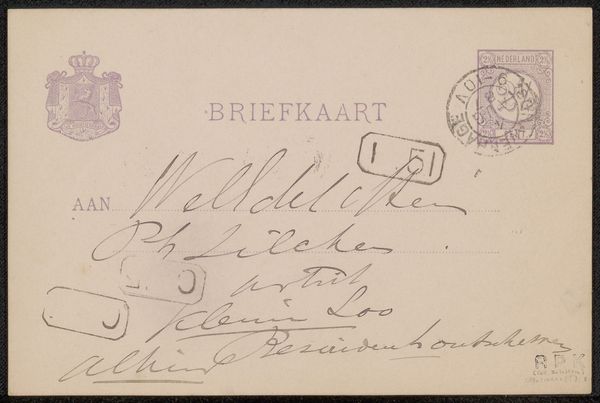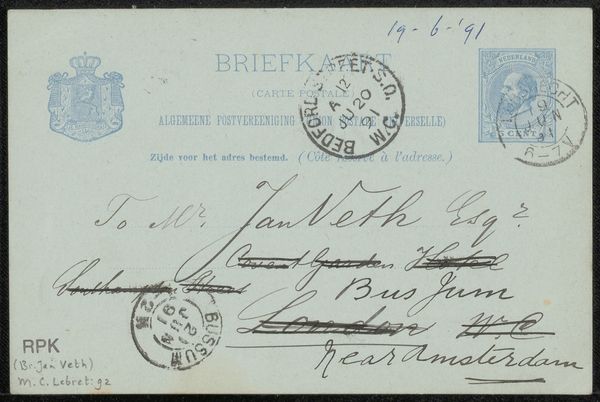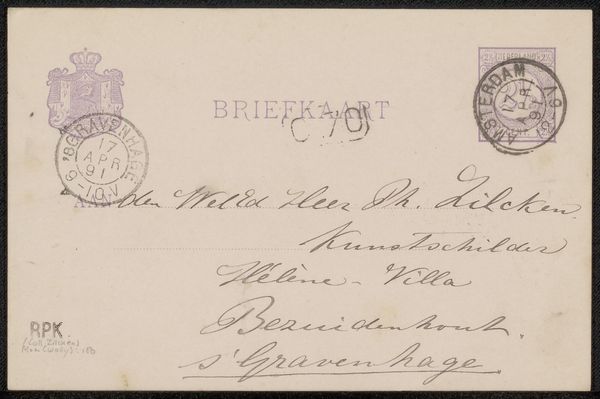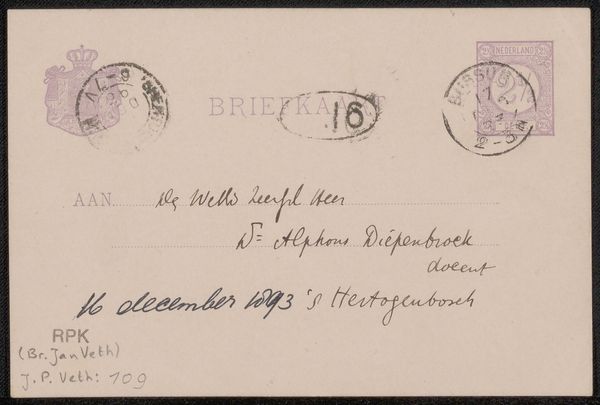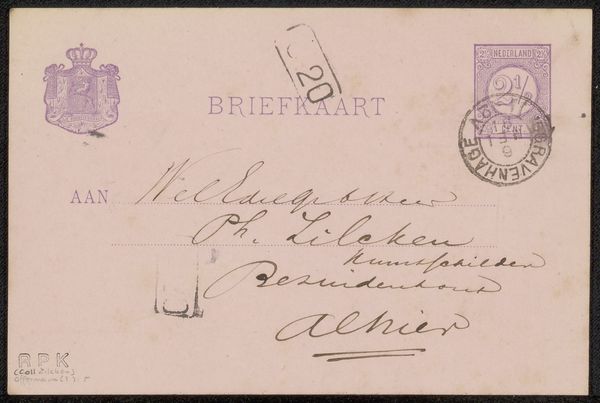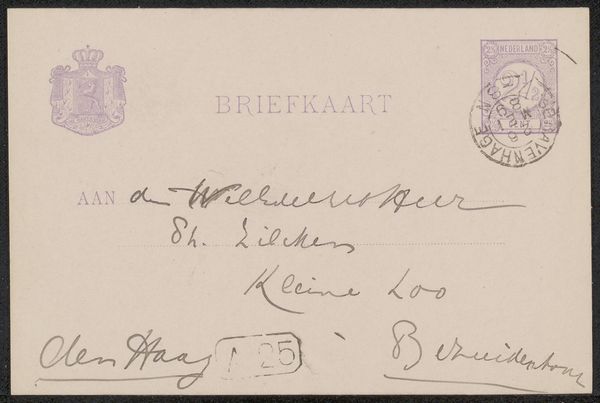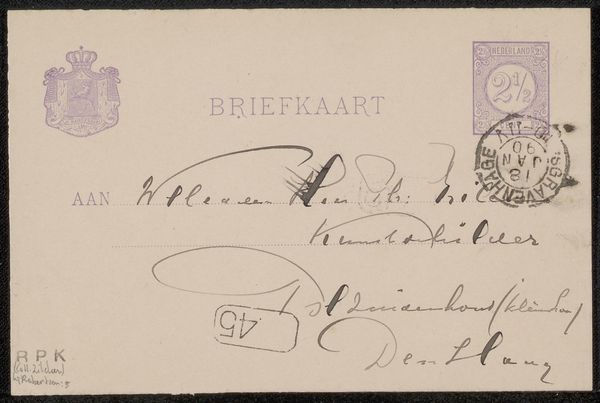
drawing, ink, pen
#
portrait
#
drawing
#
hand drawn type
#
hand lettering
#
personal sketchbook
#
ink
#
pen-ink sketch
#
pen work
#
pen
#
post-impressionism
Copyright: Rijks Museum: Open Domain
Curator: Let’s discuss "Briefkaart aan Jan Veth" by Wally Moes, created before 1898. It's rendered in ink, a humble but telling medium. Editor: There’s something undeniably intimate about this handwritten note. The cursive dances across the card, like a whisper across time. A quiet mood permeates it. Curator: Exactly. Look at the textures here: the smooth cardstock, the varying pressure of the pen creating thick and thin lines. It speaks to the material conditions of correspondence, a world before instant digital communication. Note also the postal markings, like bureaucratic seals adding layers to this act of communication. Editor: For me, the address itself holds a weight. “Aan den Heer Jan Veth” – To Mr. Jan Veth. The formal address is contrasted with the flowing script of the name and location beneath it; the name itself becomes a focal point. Jan Veth: Who was he? What thoughts and emotions accompanied this card’s journey to him? Curator: Jan Veth was a well-regarded artist, critic, and intellectual, very much within Moes' artistic circle. This card probably facilitated some dialogue within that Post-Impressionist scene. The postal stamps become evidence of their time; those simple lines stand as a stark marker of late 19th century industrial society. Editor: Indeed. The use of Dutch emblems suggests something of that burgeoning nationalism present across the visual arts during the period. It suggests a hope and an awakening tied to their shared land. These symbols work subtly to add cultural meaning. It wasn't merely a practical object but a statement of shared belonging. Curator: I see the point. But let's consider the act of inscription, the hand at work on this fragile artifact. I wonder about the cost of these materials for her? Or if they were gifted in exchange for assistance. Editor: Ultimately, both approaches help us remember that objects possess not just physical but psychological resonance. The simple card is a material document with its stamps, and, by considering how such everyday interactions might carry symbolic weight, it bridges an empathetic gap through time. Curator: Agreed. I'm left considering the means of communication, and its intersection with class and access at the turn of the century.
Comments
No comments
Be the first to comment and join the conversation on the ultimate creative platform.
